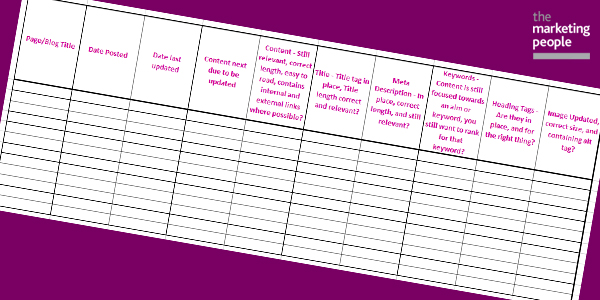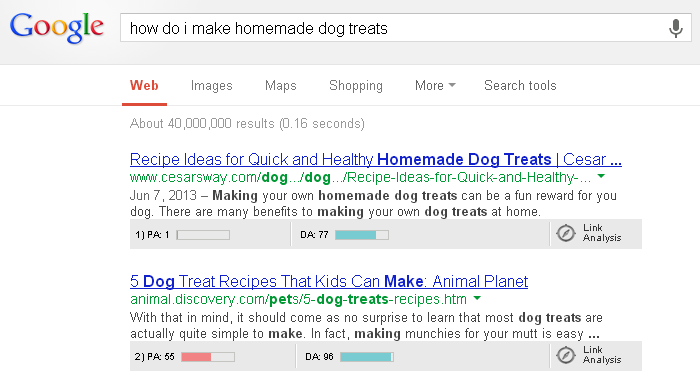

One idea we find is implanted with a lot of clients who come to us, is that SEO can be done once, get you high in search rankings and then left. But this is simply not the case. You have to keep on top of your SEO.
So we find ourselves saying over and over again that SEO is something you need to keep on top of. To ensure you keep your place in rankings ahead of your competitors. But how exactly do you keep on top of things?
Little and Often
As we have mentioned SEO is no one time thing, and you will never ‘complete’ SEO. So the best approach for your company (especially is the person dealing with your SEO has other roles too) is to perform check-ups little and often.
So where do you start with your check-ups? Use a tool like Moz. Where you have a number of free resources to get you used to the program, and getting started on SEO. Before moving on to a more robust paid option.
Their free resource kit allows you limited access to open site explorer and MozBar, as well as local and twitter analysis options.
Open Site Explorer allows you to see a whole host of factors that affect your rankings. Including your domain authority, page link metrics and inbound links to your site.
MozBar allows you metrics to analysis any web page. Which is useful for checking any missing elements on your own page. As well as what your competitors are up to.
Google Analytics also offer “page analytics” which offers in depth analysis on any webpage that contains analytics you have access to.
Put together your own toolbox that works for you to give you an idea of what needs changing. Then to assess how those changes are working.
Consider Both Front End and Back End
SEO works on a huge number of factors, which work both “back end” in the coding of your website, and “front end” in the content of your page. It can be really easy to stay focused on just one side, as both take a lot of time. However you need to remember to keep track of both.
This is where you may require help sometimes if you don’t have to chance to run this all yourself. Perhaps consider an SEO company, or web developer to look after your “backend” if you really don’t have time to learn these bits. Just remember to pick a company you will be happy to work with on a regular basis. Who will work together with you on the project. Though you should be weary of companies who promise you ‘guaranteed’ results.
And if you’re struggling with content creation that works then it may be time to seek out a copywriter, who writes for SEO purposes.
Keep Things Fresh
We do hear from a lot of our clients that, well they posted a blog 2 months ago, but they’re not ranking now. Or they have wondered why the content that has been static on their website for 2 years isn’t still drawing in the rankings it used to. And that’s because you have a lot of competition.
Almost everything ever written is now on the web. If you want your content to appear right at the top, you’re going to have to put in a little more work.
So whether it is creating new content for your blog or main web pages, or even updating old blogs with new information. You need to work a little harder on making sure your content is fresh. Any facts of figures are up to date, making sure the info is still relevant today, and linking where you can in your web page.
Do this a little at a time, using one day to write a blog, and the next to update a services page. You will gradually build, and improve your content, without being bogged down in pages and pages of content.
Create a Checklist
Being organised is essential when it comes to SEO. With so many elements to keep track of, staying organised means you know where you are in the process. As well as ensuring you complete each task to the same standard.
We would perhaps suggest a checklist. Where you have a list of the elements you want to update, alongside the pages you need to apply those updates for. You can then simply tick them off as you along. The task can be easily divided by a number of people, or passed on to a member of the team. And it also gives you an idea of what was updated recently, and what may need your attention sooner rather than later.
This is a great example from ClickMinded of a full checklist for you to use when you get started with your SEO.
However, you may also want to use one you come back to regularly. Where you can see what you updated, and when. So you know when to come back to it. We use a spreadsheet similar to the one below to refer back to.
Keep in the Know
The experts at Hubspot have a great article on keeping up to date with SEO trends, as the world of SEO changes quite often!
One of their suggestions is creating a stream on twitter. Looking at terms like ‘google algorithm’ so that any major changes that come up can be seen almost instantly. Make sure you choose a specific enough term though, as SEO may bring up a little too much to keep up with.
They also suggest following thought leaders such as Danny Sullivan or Rand Fishkin. Who are more likely to talk about any new updates, and what you can do to make the most of them.
Make sure you check out the rest of the article for more great tips.
Remember
- Little and Often – take time to update and educate yourself when it comes to SEO
- Focus on SEO as a whole, not just one end
- Get yourself organised to remember where you got up to
If you are struggling to keep up with your SEO, why not see how we could help. Visit us at our offices in Burntwood, Staffordshire, and speak to our friendly team about what your company is trying to achieve and we’ll do our best to get you there.

















